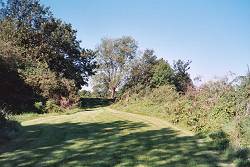Summary
Summary
What do local residents think of Peabody Hill Wood?
Peabody Hill Wood is situated between the Peabody Hill and Rosendale housing estates in the inner London Borough of Lambeth. Forest Research worked with Peabody Trust (Housing Association), Trees for Cities (Environmental Charity) and the Forestry Commission to engage and involve residents in the use and enjoyment of the wood. Forest Research investigated residents’ attitudes towards trees and woodlands and explored the ways in which they are valued.
Key findings
- Positive views of the wood concerned wildlife, the importance of having greenery in London and the colours of the trees in spring and autumn
- 33% “highly appreciated” the wood
- Negative views mentioned dumped rubbish, concerns about personal safety, overgrown vegetation blocking views, and bikes and dumped cars
- 19% of respondents rated their appreciation of the wood as low.
- Many residents described an inner conflict: while they valued the wood as an element of nature in their urban environment they were also concerned about how the woodland was abused
- Many residents had ideas about how the wood could be improved and reclaimed by local people who wanted to use the space and enjoy it
Similar projects have also been undertaken to explore the ways in which people value trees and forests in Vermont (USA) and Northwest and Southeast England. [LINKS]
Publications and presentations
Funders and partners
Joint funded by the Forestry Commission, Forest Research and the Scottish Forestry Trust.
Accommodation and advice provided by the Northeastern Research Station, USDA Forest Service, Vermont.
Status
Completed 2002.

